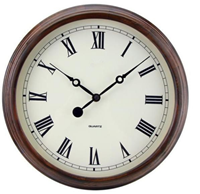Working principle of crystal clock oscillator and its relationship with clock chip

Working principle of crystal clock oscillator and its relationship with clock chip
The operation of clock chip needs the support of clock, if there is no clock circuit to generate clock to drive clock chip,
then the clock chip can not execute the program. Clock chip can be regarded as a sequential logic circuit driven by clock.
In digital circuits, there are two types of clock signals: one is RTC (Real Time Clock),
that is the same function of the crystal clock oscillator 32.768KHz has in quartz watch. The second is the clock signal other than the real time clock,
such as the crystal clock oscillator 12Mhz, which means that the number of vibrations generated by the crystal oscillator per second is 12000000.
Here, we need to point out that the clock is not the real time in our life, but a periodic frequency signal, also known as periodic pulse signal.
These pulse signals are stable and accurate clock signals generated by the piezoelectric characteristics of crystal oscillator.
The chip clock needs these clock signals as the timing guidance of logic instructions.
Working principle of crystal clock oscillator
When a voltage is applied to the two electrodes of quartz, the wafer will deform. Conversely, if the crystal is deformed by an external force,
a voltage will be generated at the two poles. This is what we called piezoelectric effect.
We use this physical property of quartz crystal to make crystal oscillator products with different frequencies.
Clock Chip
The clock chip consists of memory and accumulator, which need logic gate to complete the logic task under the guidance of clock signal.
For example, the latch in the logic gate circuit is a D flip-flop, and the set 1, clear 0 and set number functions of the flip-flop all need the jump edge.
The D flip-flop stores the data after the rising edge, and the rising edge needs the external crystal clock oscillator to provide a stable pulse signal.
Clock circuit is the heart of microcomputer. CPU completes different instruction functions through complex sequential circuits.
Generally, the clock signal can be generated by two kinds of signals: One is internal mode,
which uses the internal oscillation circuit to generate the clock signal; The other is external mode, the clock signal is introduced from the outside,
and the crystal clock oscillator is the external clock signal source of the chip.
Crystal clock Oscillator
The crystal clock oscillator has very good frequency stability and anti-interference ability,
so the crystal oscillator is the most suitable component to generate the clock signal.
The main function of the crystal clock oscillator is to provide the reference frequency to the various parts of the graphics card,
network card, motherboard and other accessories. It is like a ruler. The clock chip uses this ruler to measure the time.
If the working frequency of the crystal clock oscillator is unstable,
it will cause the instability of the working frequency of the related equipment and cause the risk of failure.
It can be said that without crystal oscillator, there would be no timing, no digital circuit, and no clock chip.
